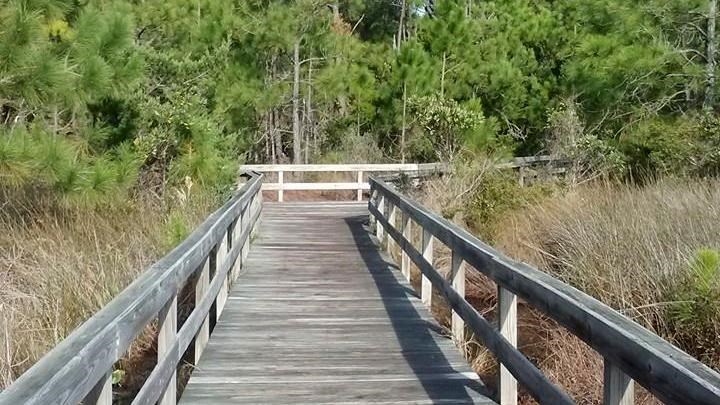Last updated: March 23, 2021
Place
Hammock Hills Trail

Bicycle - Rack, Cellular Signal, Historical/Interpretive Information/Exhibits, Parking - Auto, Scenic View/Photo Spot, Trailhead
A portion of the trail was damaged during Hurricane Dorian in 2019. There are plans to improve the trail in the near future.
The trail begins its journey to the marshy grass-lined edge of Pamlico Sound in a shrub thicket woodland. It crosses a boardwalk and splits into its loop just past a small, freshwater branch of Island Creek. Go right, and the trail passes an open dune scape where you'll notice low-growing prickly pear cactus. The path swings into a pine forest where distance from the ocean and an accumulating layer of soil invites less salt-tolerant species to take hold and mature.
After more shrub thicket, a wooden viewing platform appears on the edge of the sound. Along the marsh, vegetation varies from the saltmeadow hay found above the highest tide lines to black needlerush and saltmarsh cordgrass. A rich organic stew of minerals, saltwater, and decaying sea and plant life creates the perfect nursery for fish and crustaceans such as clams, crabs, and oysters.
The black skimmer, a gull-like bird, is often seen swooping low to use its large lower bill to scoop fish and other food from this fertile marsh. To the west, the setting sun might be dipping into the waters that obscure the distant shore of North Carolina.
The trail swings back away from the marsh among thickets and then re-enters the pine forest. This low, protective cover is the key to survival for the forest's population of rabbits, black racers, skinks, mice, and tree frogs. It protects them from owls and the northern harriers often seen circling overhead.
These are dunes slowly being clothed in a young forest.
